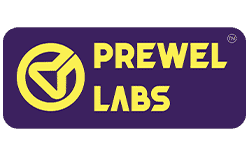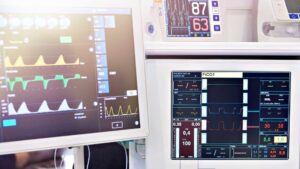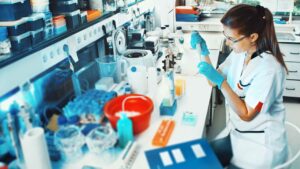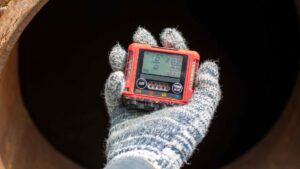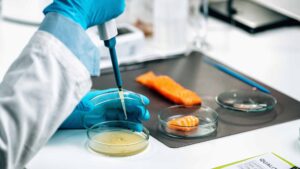Food Testing FAQs
What are the 4 main food tests?
The four main food tests include testing for proteins, carbohydrates, lipids (fats), and moisture content. Our food testing service employs various analytical methods to determine the composition and quality of food products, ensuring compliance with regulatory standards.
What type of lab food testing does my product need?
The type of lab food testing your product needs depends on factors such as product composition, intended use, and regulatory requirements. Our food testing service offers a range of analyses, including nutritional testing, contaminants testing, and shelf-life studies, tailored to meet the specific needs of your product.
What are the 4 types of food hazards?
The four types of food hazards are physical hazards, chemical hazards, biological hazards, and allergenic hazards. Our food testing service helps identify and mitigate these hazards through analyses such as microbiological testing, allergen testing, and chemical residue testing.
How do you test for sugar in food?
Sugar in food is tested using methods such as titration, enzymatic assays, and chromatography. Our food testing service employs these techniques to accurately determine sugar content in various food products, ensuring compliance with labeling requirements.
How do you test protein in food?
Protein in food is tested using methods such as Kjeldahl method, biuret method, and near-infrared spectroscopy. Our food testing service utilizes these techniques to assess protein levels in food products, supporting nutritional labeling and quality control.
How companies test for food hazards
Companies test for food hazards through a combination of microbiological testing, chemical analysis, allergen testing, and physical inspection. Our food testing service assists companies in implementing comprehensive testing protocols to identify and mitigate potential hazards, ensuring food safety.
Food testing importance, methods, and limitations
Food testing is essential for ensuring food safety, quality, and compliance with regulatory standards. Methods include physical, chemical, and microbiological analyses. Limitations may arise from sample variability and detection limits. Our food testing service addresses these aspects to provide accurate and reliable results.
What are the 5 foods to eat every day?
Five foods to eat every day for a balanced diet include fruits, vegetables, whole grains, lean proteins, and dairy or dairy alternatives. While our food testing service focuses on quality and safety, these dietary recommendations support overall health and well-being.
How do you determine the color changes in food tests?
Color changes in food tests are determined through spectrophotometry, colorimetry, and visual inspection. Our food testing service uses these methods to assess color stability and changes in food products, ensuring they meet visual and quality standards.
What is HACCP in food safety?
HACCP (Hazard Analysis and Critical Control Points) in food safety is a systematic approach to identifying, evaluating, and controlling hazards throughout the food production process. Our food testing service supports HACCP implementation by providing data on potential hazards, contributing to a comprehensive food safety management system.
What are the limitations of sensory testing?
Sensory testing has its constraints, primarily due to its subjective nature. Factors like individual preferences, fatigue, and prior experiences can influence results. Additionally, it may not always detect subtle differences or changes in products accurately.
How are microbiological tests conducted?
Microbiological tests involve sampling food products and culturing them under specific conditions to detect microorganisms like bacteria, yeast, and mold. Techniques include plate counting, PCR (Polymerase Chain Reaction), and immunological assays.
How can I avoid food contamination?
Preventing food contamination requires practicing proper hygiene during preparation and storage, ensuring thorough cooking, separating raw and cooked foods, maintaining clean surfaces and utensils, storing food at appropriate temperatures, and being vigilant about expiration dates.
How can I extend the shelf life of food?
Shelf life can be prolonged through various preservation methods such as canning, freezing, dehydration, vacuum packaging, adding preservatives, controlling moisture, and maintaining proper storage conditions (temperature, humidity, light exposure).
What are the regulations for shelf-life testing?
Shelf life testing regulations vary by country and product type. Generally, they mandate manufacturers to conduct stability testing to determine a product’s expected shelf life under specific storage conditions. Regulatory agencies may also set guidelines for labeling, packaging, and storage based on these results.
